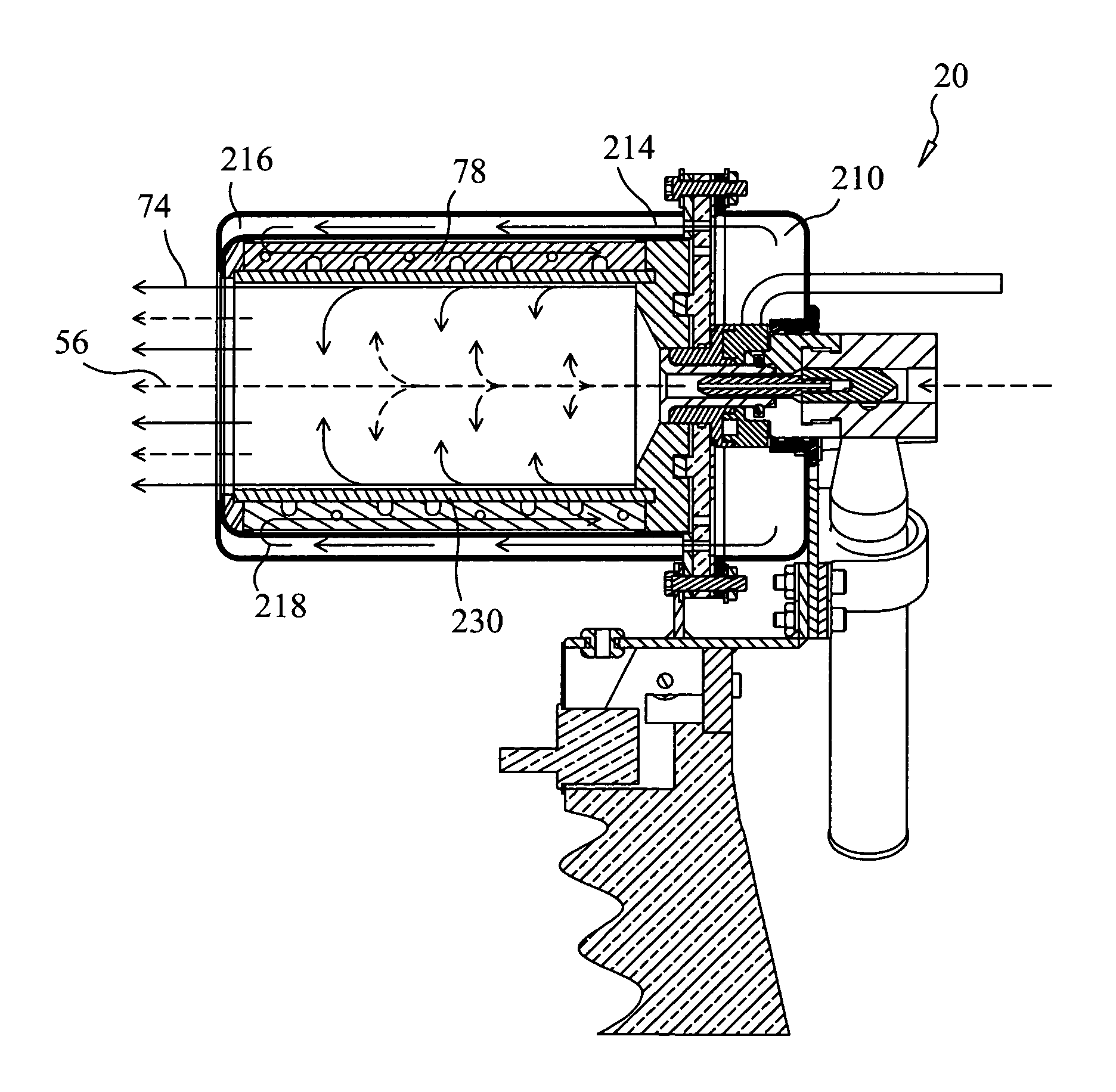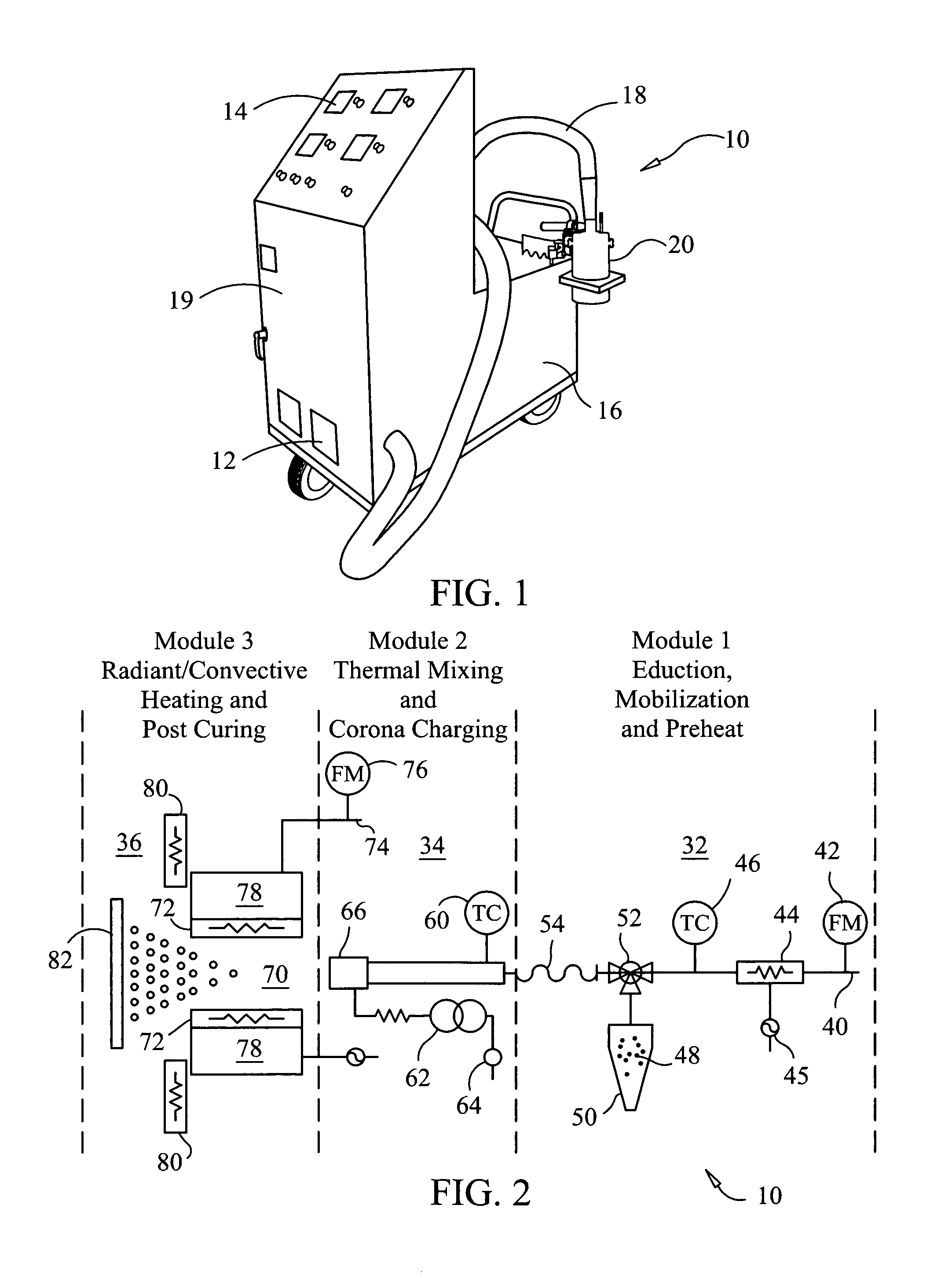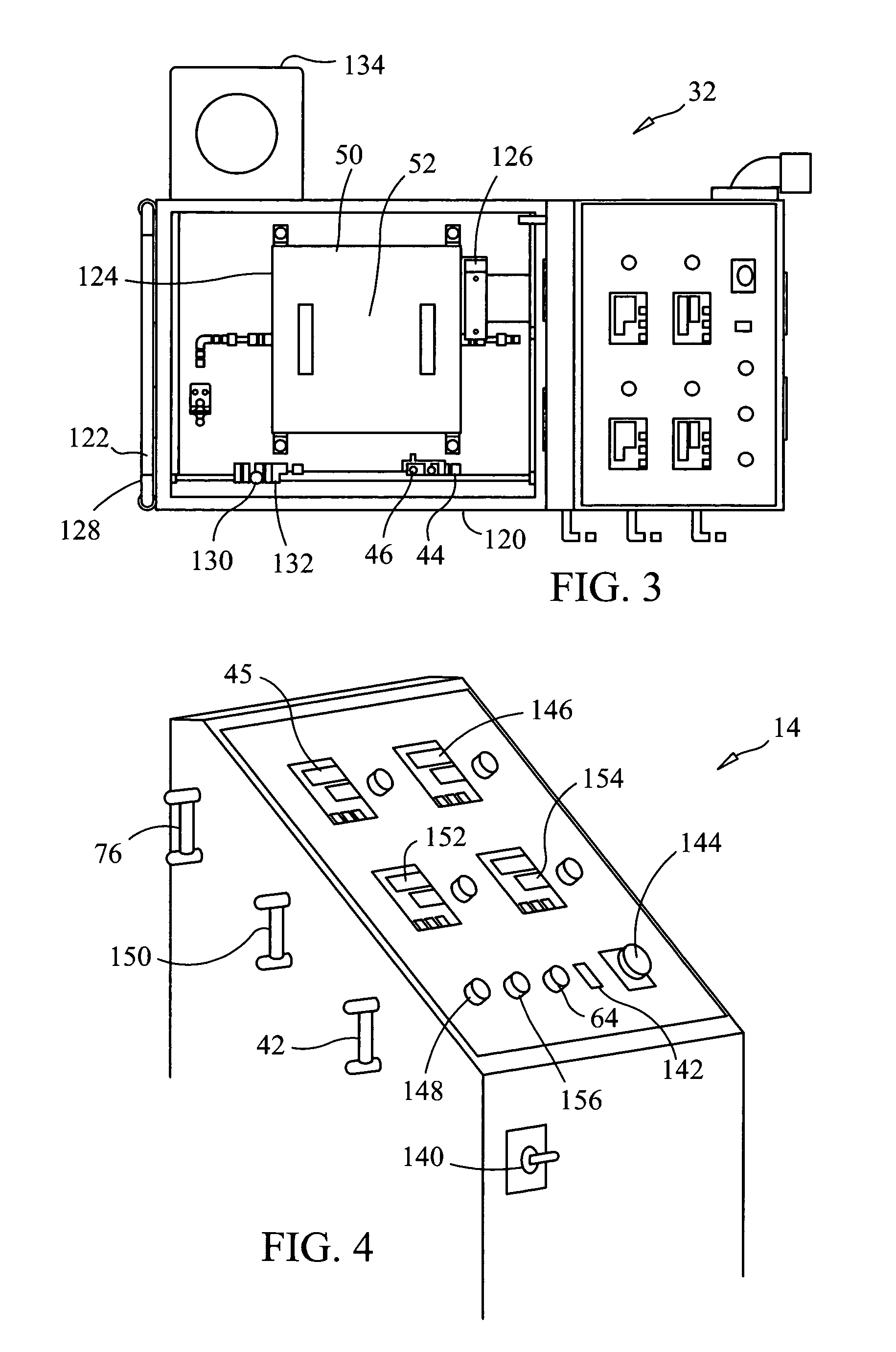Thermal spray formation of polymer compositions
a polymer composition and thermal spray technology, applied in the direction of electrostatic spraying apparatus, tribo-charging spraying, coating, etc., can solve the problems of inability to incorporate thermal spray technology, high cost of manual methods involving cutting foam components from large bungs, and high cost of manual methods. , to achieve the effect of facilitating thermal spraying of difficult-to-spray materials, reducing or eliminating thermal degradation of materials, and economic application of polymer foams and coating
- Summary
- Abstract
- Description
- Claims
- Application Information
AI Technical Summary
Benefits of technology
Problems solved by technology
Method used
Image
Examples
Embodiment Construction
[0169]Referring to FIG. 1, a preferred embodiment of system 10 is illustrated. In this embodiment, system 10 is a self-contained, field-deployable thermal spray system. System 10 comprises five distinct yet integrated operating segments: on-board power distribution segment 12, control panel segment 14, powder bin segment 16, umbilical hose segment 18 and spray gun segment 20. In a preferred embodiment, segments 12, 14 and 16 are incorporated into cart 19.
[0170]When supplied with 480-volt single-phase power, power distribution segment 12 utilizes transformers to provide 240-volt, 120-volt AC power as well as 24-volt DC power to the rest of system 10. Control panel segment 14 provides the operator of system 10 control of the power to the various heaters, temperature control of the various heaters, flow control of the carrier gas, selection of the type of carrier gas used, as well as on / off control of the vibrator attached to the powder bin segment 16. Insulated, heated umbilical hose ...
PUM
| Property | Measurement | Unit |
|---|---|---|
| Temperature | aaaaa | aaaaa |
| Composition | aaaaa | aaaaa |
| Electric charge | aaaaa | aaaaa |
Abstract
Description
Claims
Application Information
 Login to View More
Login to View More - R&D
- Intellectual Property
- Life Sciences
- Materials
- Tech Scout
- Unparalleled Data Quality
- Higher Quality Content
- 60% Fewer Hallucinations
Browse by: Latest US Patents, China's latest patents, Technical Efficacy Thesaurus, Application Domain, Technology Topic, Popular Technical Reports.
© 2025 PatSnap. All rights reserved.Legal|Privacy policy|Modern Slavery Act Transparency Statement|Sitemap|About US| Contact US: help@patsnap.com



